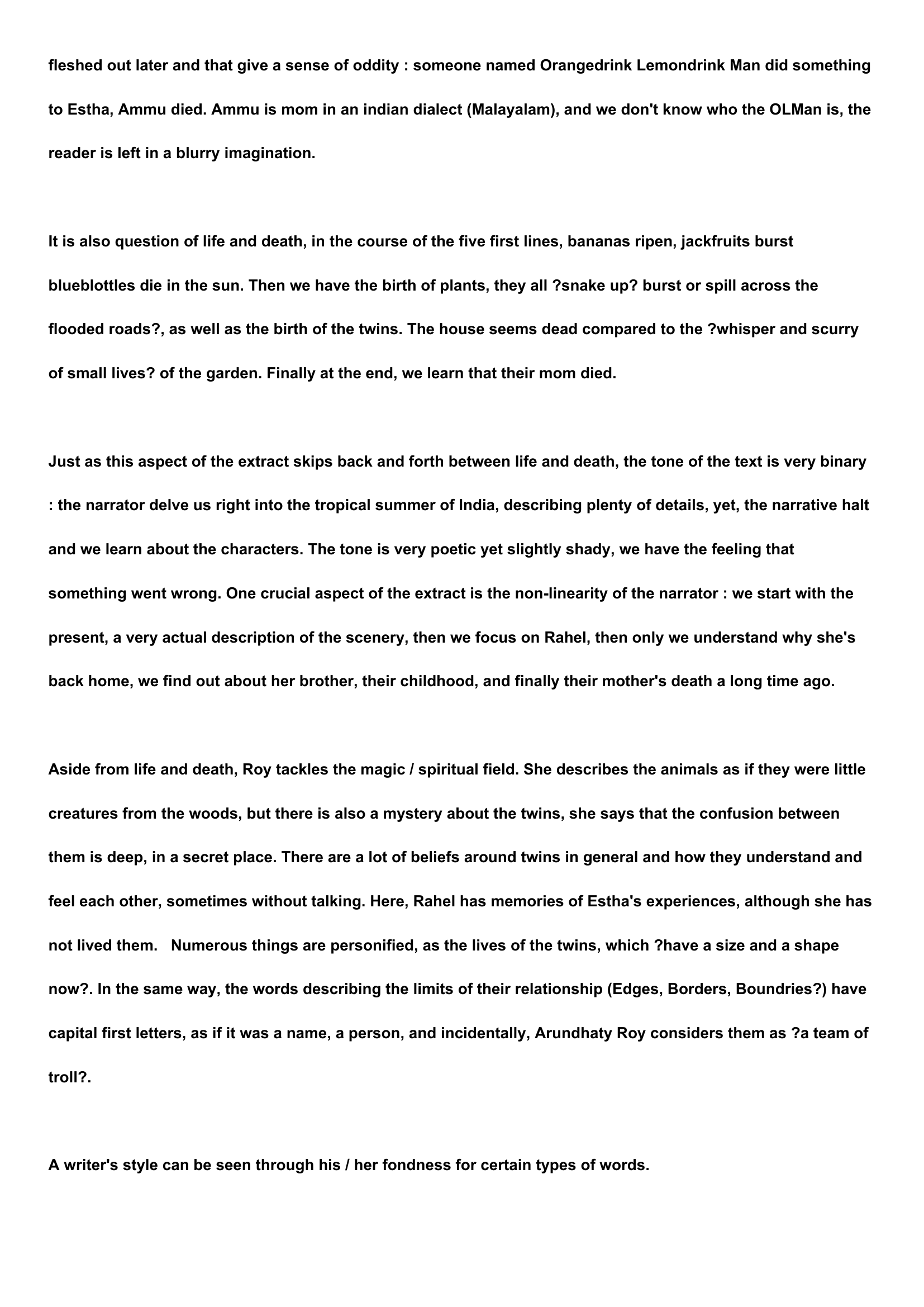Arundhati Roy, incipit of The God of small things
Publié le 05/04/2019

Extrait du document
«
fleshed out later and that give a sense of oddity : someone named Orangedrink Lemondrink Man did something
to Estha, Ammu died.
Ammu is mom in an indian dialect (Malayalam), and we don't know who the OLMan is, the
reader is left in a blurry imagination.
It is also question of life and death, in the course of the five first lines, bananas ripen, jackfruits burst
blueblottles die in the sun.
Then we have the birth of plants, they all ?snake up? burst or spill across the
flooded roads?, as well as the birth of the twins.
The house seems dead compared to the ?whisper and scurry
of small lives? of the garden.
Finally at the end, we learn that their mom died.
Just as this aspect of the extract skips back and forth between life and death, the tone of the text is very binary
: the narrator delve us right into the tropical summer of India, describing plenty of details, yet, the narrative halt
and we learn about the characters.
The tone is very poetic yet slightly shady, we have the feeling that
something went wrong.
One crucial aspect of the extract is the non-linearity of the narrator : we start with the
present, a very actual description of the scenery, then we focus on Rahel, then only we understand why she's
back home, we find out about her brother, their childhood, and finally their mother's death a long time ago.
Aside from life and death, Roy tackles the magic / spiritual field.
She describes the animals as if they were little
creatures from the woods, but there is also a mystery about the twins, she says that the confusion between
them is deep, in a secret place.
There are a lot of beliefs around twins in general and how they understand and
feel each other, sometimes without talking.
Here, Rahel has memories of Estha's experiences, although she has
not lived them. Numerous things are personified, as the lives of the twins, which ?have a size and a shape
now?.
In the same way, the words describing the limits of their relationship (Edges, Borders, Boundries?) have
capital first letters, as if it was a name, a person, and incidentally, Arundhaty Roy considers them as ?a team of
troll?.
A writer's style can be seen through his / her fondness for certain types of words. .
»
↓↓↓ APERÇU DU DOCUMENT ↓↓↓
Liens utiles
- Indian Literature I INTRODUCTION Arundhati Roy's The God of Small Things Indian author Arundhati Roy poses with a copy of her acclaimed first novel, The God of Small Things (1997).
- Dissertation, Incipit du "dieu des petits riens" de Arundhati Roy, en anglais
- All the Things You Are - analyse de l'oeuvre.
- Essay English : In Arthur Miller’s play “All my sons”, Joe Keller is a hero in his family and in the neighborhood even if he did some very awful things.
- Ferret The ferret is a small mammal with short legs and a long, slim body.

































